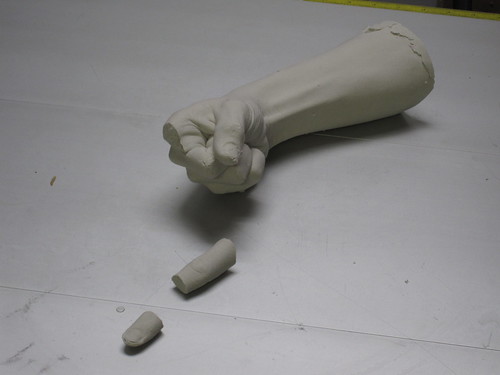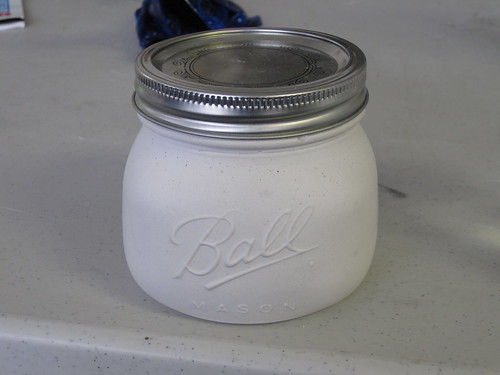Casting and Molding
During casting and molding class we learned a lot about the different materials and techniques. Above you’ll see a casting of someones hand in plaster from an alginate mold. Our victim, Jared, had to leave their hand in the alginate for about 5 minutes. Alginate is particularly suitable for this type of casting because it is very human safe, but requires a container large enough. It took about an hour to cure the plaster. The broken finger of the plaster cast is likely due to having moved the mold while curing. The alginate mold is completely destroyed to remove the cast.
The cast jar above was pulled from a very flexible and well preserved silicone mold. several layers of silicone were painted on the original jar while in a vacuum chamber.
This silicone casting was made from a quick setting silicone in an easy caulking gun like dispenser. The mold is a part we machined during a cnc milling class. This technique is of particular interest to me because this design started in CAD and the final cast is incredibly precise. Note the finish from the end-mill transferred to the cast.
Many of the intermediate steps are in our flickr stream and the slide show below.




I conceive this web site contains some very good information for everyone :D. “America is not merely a nation but a nation of nations.” by Lyndon B. Johnson.